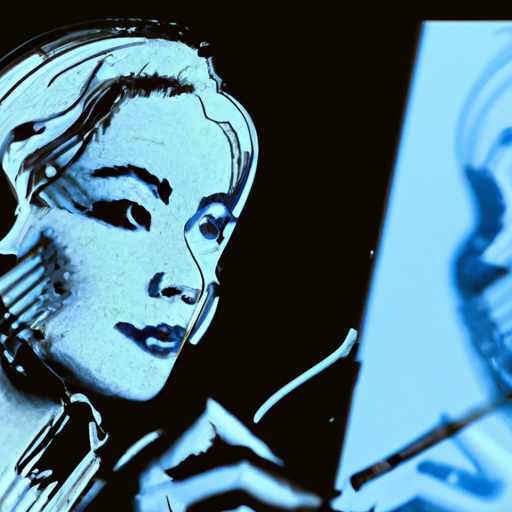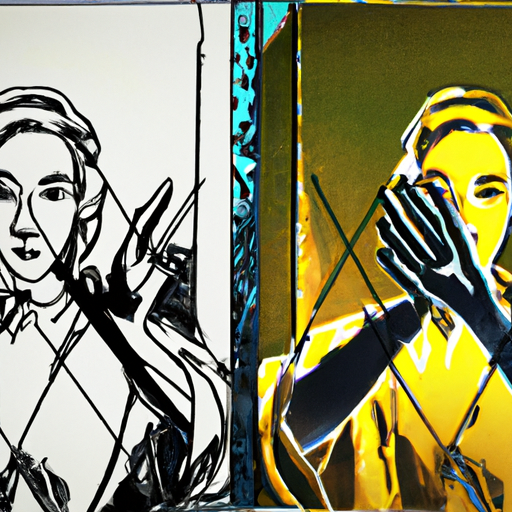
-
Table of Contents
- From Sketch to Screen: Digitizing Hand-Drawn Graphics
- The Evolution of Hand-Drawn Graphics
- The Tools and Techniques of Digitizing Hand-Drawn Graphics
- Scanning
- Graphic Tablets
- Digital Pens
- Image Editing Software
- The Benefits of Digitizing Hand-Drawn Graphics
- Efficiency and Productivity
- Scalability and Reproducibility
- Flexibility and Versatility
- Accessibility and Distribution
- Case Studies: Digitizing Hand-Drawn Graphics in Practice
- Advertising and Marketing
- Animation and Film
- Design and Illustration
- Summary
From Sketch to Screen: Digitizing Hand-Drawn Graphics

Hand-drawn graphics have long been a staple in various industries, from advertising and marketing to animation and design. The unique charm and personal touch of hand-drawn illustrations have captivated audiences for decades. However, with the advent of digital technology, the process of creating and digitizing hand-drawn graphics has undergone a significant transformation. In this article, we will explore the journey from sketch to screen, delving into the tools, techniques, and benefits of digitizing hand-drawn graphics.
The Evolution of Hand-Drawn Graphics
Hand-drawn graphics have a rich history that dates back centuries. Artists and illustrators have used traditional mediums such as pencil, pen, and paint to create stunning visuals. These hand-drawn illustrations were then reproduced through various printing techniques to reach a wider audience.
However, the process of creating hand-drawn graphics was time-consuming and often limited in terms of scalability. Artists had to painstakingly recreate their work for each reproduction, leading to inconsistencies and potential loss of detail. Additionally, the distribution of hand-drawn graphics was limited to physical mediums such as books, magazines, and posters.
The advent of digital technology revolutionized the world of hand-drawn graphics. Artists and designers now have access to a wide range of digital tools and software that enable them to create, edit, and reproduce their work with ease. The digitization of hand-drawn graphics has opened up new possibilities and opportunities for artists, while also providing numerous benefits for businesses and consumers.
The Tools and Techniques of Digitizing Hand-Drawn Graphics
Digitizing hand-drawn graphics involves the use of various tools and techniques to transform traditional illustrations into digital formats. Let’s explore some of the key tools and techniques used in this process:
Scanning
The first step in digitizing hand-drawn graphics is scanning the original artwork. Artists use high-resolution scanners to capture the intricate details and textures of their hand-drawn illustrations. Scanning preserves the authenticity of the original artwork while creating a digital copy that can be easily edited and reproduced.
Graphic Tablets
Graphic tablets, also known as drawing tablets, are essential tools for digitizing hand-drawn graphics. These devices allow artists to draw directly on a pressure-sensitive surface, replicating the experience of traditional drawing. Graphic tablets come in various sizes and offer features such as pen pressure sensitivity and customizable shortcut keys, enhancing the artist’s workflow and creativity.
Digital Pens
Digital pens are specialized stylus pens designed for use with graphic tablets and touchscreen devices. These pens offer precision and control, allowing artists to create detailed and accurate digital illustrations. Digital pens often come with customizable buttons and pressure sensitivity, providing a seamless transition from traditional drawing to digital art.
Image Editing Software
Image editing software plays a crucial role in the digitization process. Artists use software such as Adobe Photoshop, Corel Painter, and Procreate to refine their hand-drawn illustrations, adjust colors, add effects, and make necessary edits. These software tools offer a wide range of features and capabilities that enhance the quality and versatility of hand-drawn graphics.
The Benefits of Digitizing Hand-Drawn Graphics
The digitization of hand-drawn graphics offers numerous benefits for artists, businesses, and consumers alike. Let’s explore some of the key advantages:
Efficiency and Productivity
Digitizing hand-drawn graphics significantly improves efficiency and productivity. Artists can easily make changes, experiment with different styles, and iterate their work without the need for starting from scratch. The ability to undo and redo actions, use layers, and apply filters and effects streamlines the creative process and saves valuable time.
Scalability and Reproducibility
Digital hand-drawn graphics can be easily scaled up or down without any loss of quality. This scalability makes it possible to use the same artwork across various mediums, from small icons to large billboards. Additionally, digital files can be reproduced indefinitely without any degradation, ensuring consistent quality and reducing production costs.
Flexibility and Versatility
Digitization provides artists with unparalleled flexibility and versatility. Hand-drawn graphics can be easily combined with other digital elements, such as photographs and typography, to create visually stunning compositions. Artists can experiment with different color palettes, textures, and effects, pushing the boundaries of their creativity.
Accessibility and Distribution
Digital hand-drawn graphics can be easily shared and distributed across various platforms and devices. Artists can showcase their work on websites, social media, and online marketplaces, reaching a global audience. The accessibility of digital graphics allows businesses and consumers to easily discover and engage with the artwork, fostering a broader appreciation for hand-drawn illustrations.
Case Studies: Digitizing Hand-Drawn Graphics in Practice
Let’s explore some real-world examples of how digitizing hand-drawn graphics has transformed industries:
Advertising and Marketing
In the advertising and marketing industry, hand-drawn graphics have been used to create memorable and impactful campaigns. Digitizing these graphics has allowed advertisers to easily adapt and modify their visuals for different mediums, such as print, digital, and outdoor advertising. The scalability and reproducibility of digital hand-drawn graphics have enabled businesses to maintain consistent branding across various channels.
Animation and Film
Digitizing hand-drawn graphics has revolutionized the animation and film industry. Traditional hand-drawn animation required thousands of individual frames to be drawn by hand, a labor-intensive process. With digital tools, animators can create and manipulate characters and backgrounds more efficiently, resulting in smoother and more dynamic animations. The digitization of hand-drawn graphics has also opened up new possibilities for visual effects and post-production techniques.
Design and Illustration
Designers and illustrators have embraced the digitization of hand-drawn graphics to enhance their creative process. Digital tools and software offer a wide range of brushes, textures, and effects that can be applied to hand-drawn illustrations, adding depth and dimension. The flexibility and versatility of digital hand-drawn graphics have allowed designers to explore new styles and techniques, pushing the boundaries of visual communication.
Summary
The journey from sketch to screen has transformed the world of hand-drawn graphics. The digitization of hand-drawn illustrations has provided artists with powerful tools and techniques to create, edit, and reproduce their work with ease. The benefits of digitizing hand-drawn graphics, such as efficiency, scalability, flexibility, and accessibility, have revolutionized industries such as advertising, animation, and design. As technology continues to advance, the future of hand-drawn graphics looks promising, with endless possibilities for creativity and innovation.
